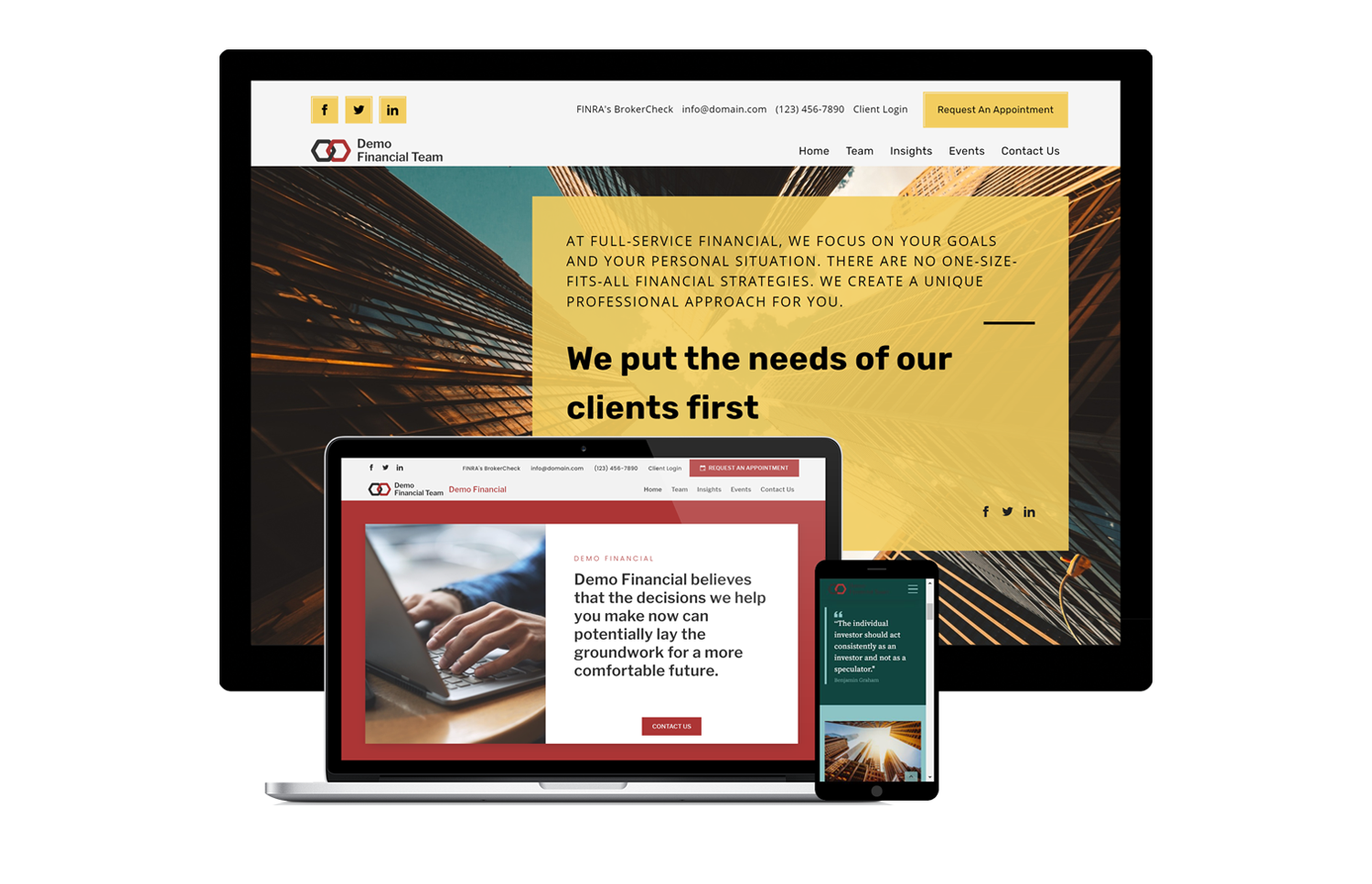Developing Effective Website Content
Your website content should be fresh, informative, and written to benefit both clients and prospects.

For visitors to get the most from your website, the content should be fresh, informative, and written to benefit both clients and prospects. Website visitors are often looking for information that is different from what you might provide in other formats (ads, printed newsletters, seminars, etc.). The easier it is for visitors to process your content and navigate your site, the more likely it is that they will spend time there and revisit.
Here are some ideas and resources to help you get started with developing effective website content.
Provide Informative, Useful Content
Visitors to your website want to gain some insight into your practice, the services you provide, and your business philosophy — not just look up your phone number. They want access to engaging, relatable financial resources that can help improve their financial situations.
Sharing information about you, your company, and your company’s mission helps achieve the first part of that goal. Providing educational resources such as financial and hot topic articles, calculators, videos, and market data can achieve the latter part.
Write a Bio
Qualifications are important in the financial services sector. Your clients and prospects care about your experience and credentials and want to know that you are qualified and trustworthy.
A great way to write a biography is to begin with a template. You can also find helpful guides and tips for writing a bio online.
Use your bio to summarize your values, education, focus, and experience. Offering some information about your personal life and community involvement may help establish credibility. Remember that it is important to create a positive first impression for visitors.
Add a Call to Action
Adding a call to action to your site can help you gain new contacts as well as make it easy for visitors to sign up to receive your newsletter, request more information via email, or follow you on social media (if applicable). A good call to action will offer something “free” to website visitors so they will contact you instead of “just look.” Options include offering a complimentary financial consultation, receiving a special economic report, or registering for an upcoming seminar.
Set Yourself Apart
If you operate in a certain business niche, make sure your website highlights that fact. Some financial services companies target a specific market — teachers, business owners, farm owners, professional athletes, etc. Others focus on specific products (employee benefits, annuities, life insurance) or financial goals (retirement planning, estate planning, wealth preservation).
Highlighting your business focus has two advantages:
1. It gives you an opportunity to show site visitors that you are an expert in a specific area.
Prospects will feel more comfortable doing business with an advisor who focuses on a market segment they belong to (for example, small-business planning), who specializes in a product for which they have a need (such as insurance protection), or who specializes in a financial strategy they are most concerned about (such as tax reduction and estate planning).
2. It helps increase search engine optimization.
If your site is full of content about providing tractor insurance for farm owners, you will have a greater chance of coming up under those unique keyword combinations in search engines than you would by using general terms like “financial services” and “life insurance,” which are used by most of your competitors.
Provide an Account Login/Access Link
An account login (or account access) link is a great strategy to build business loyalty and encourage clients to visit your website on a regular basis. Create a link where your clients can access their accounts with your company. Make this link easy to find, and encourage your clients to access their accounts in your marketing communications.
Use Descriptive Links
Avoid using “Click Here” links, because they are likely to be glossed over by visitors, and search engines will not gather useful information from them. Also avoid using full web addresses (e.g., https://www.broadridge.com/advisor/advisorwebsite), because they can be distracting and are difficult to read. Instead, use descriptive links that tell visitors what they are clicking on (e.g., Advisor Solutions Websites).
Keep It Short and Simple
Website visitors tend to scan rather than read long content. You might consider using a less formal writing style on your site that feels conversational and generates rapport.
Format Content
Formatting is important to make your content easier to read and therefore more likely to be read.
-
Bullet points make lists of items easier to read
-
Subheads make scanning content easier and also help search engines identify what the content is about
-
Use italics and boldface to highlight important information
-
Underlining should be used only for links to distinguish them from other highlighted copy
-
Use numbered lists when giving directions or steps
Avoid Common Mistakes
-
Hurdles — Long, unavoidable splash pages and/or a requirement to provide contact information for access to the content are no longer acceptable web marketing practices
-
Too much content — Avoid “fluff” and remember to keep content short and simple. If it does not provide value to visitors, it should not be included
-
Keyword stuffing — Though you want to make sure there are keywords in your content for search engine optimization, it is more important to provide useful content to visitors
Proofread Content
Grammatical errors and typos can make your advisor site look unprofessional. Be vigilant to make sure your site content is free of errors. Your website represents you and your company. Poor grammar and other serious errors can turn off potential clients.
Promote Your Website
Once you have developed your website content and received compliance approval, the next step is to promote your site. Promote your site by including a link in your email signature, listing it everywhere you name appears, and telling everyone about it.
Let’s talk about what’s next for you
Our representatives and specialists are ready with the solutions you need to advance your business.
Want to speak with a sales representative?
| Table Heading | |
|---|---|
| +1 800 353 0103 | North America |
| +442075513000 | EMEA |
| +65 6438 1144 | APAC |
Thank you.
Your request has been successfully submitted. A representative will contact you shortly.



